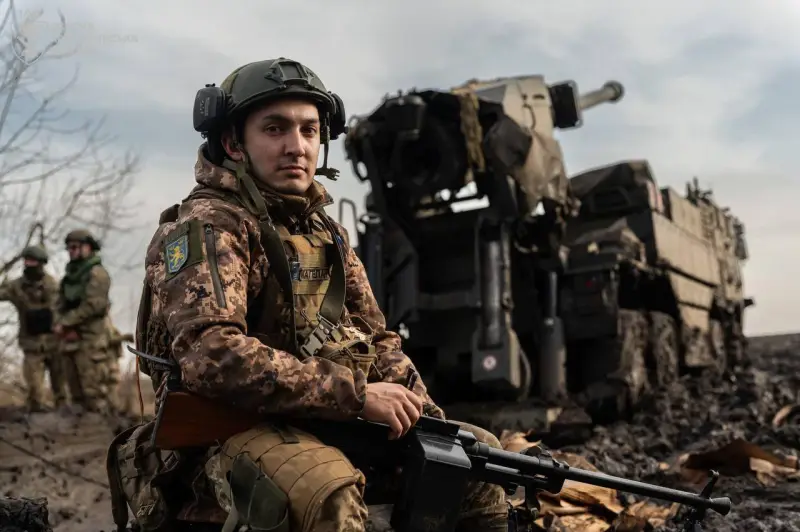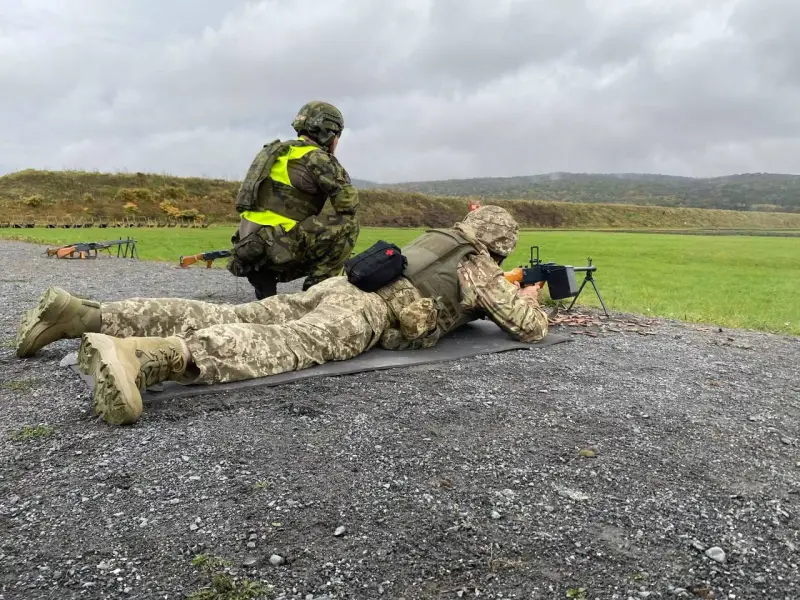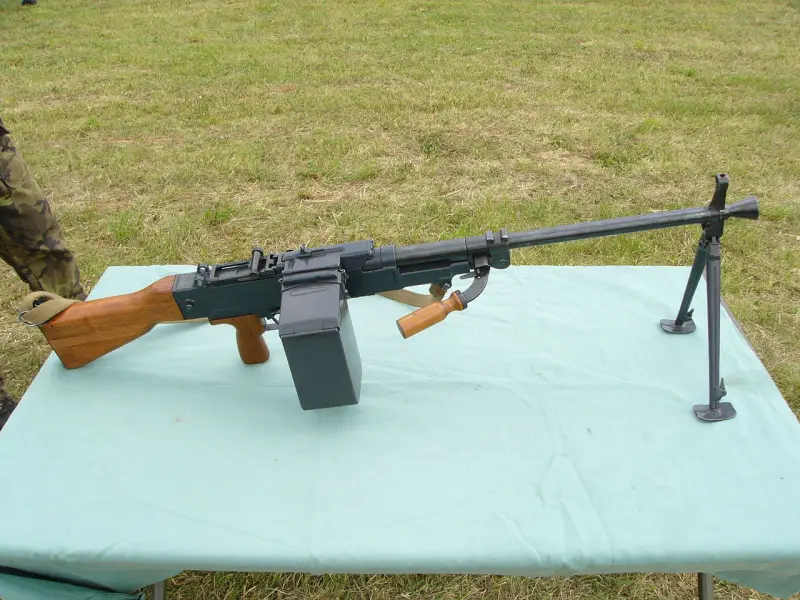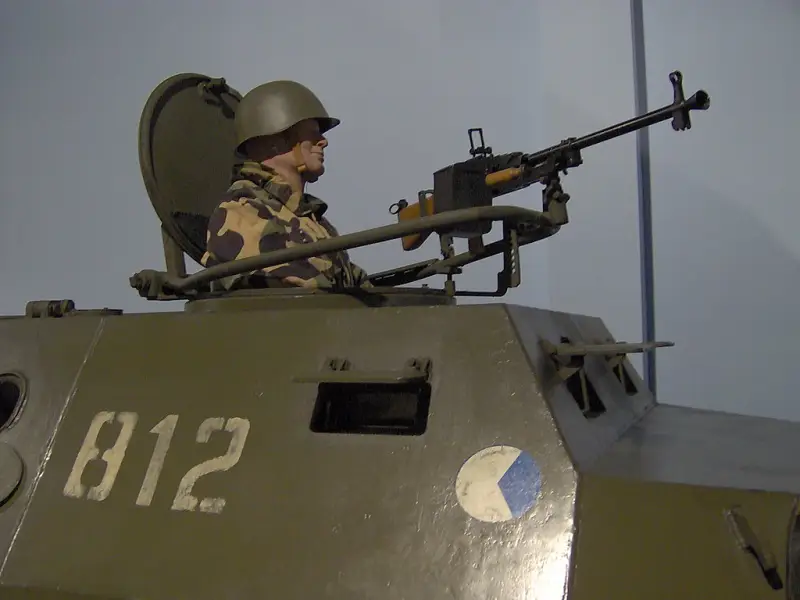Czechoslovakian machine guns UK vz.59 in Ukraine

Ukrainian militant with a UK vz.59 machine gun. Presumably early 2024
Most of the weapons and equipment transferred to the Kyiv regime by foreign partners are morally and physically obsolete. The Czech Republic provided a particularly interesting example of this kind. Two years ago, she promised the Ukrainian side a large number of small arms weapons different types from the warehouses of their army. A special place in this supply was occupied by UK vz.59 machine guns, produced since the late fifties and long since withdrawn from service.
Fast deliveries
The Czech government was one of the first to respond to the start of the Russian Special Operation to protect Donbass and promised military-technical assistance to the Kyiv regime. Already at the end of February 2022, it announced the first package of supplies, which should have included various types of weapons and ammunition.
As part of the first packages, Ukraine was provided with a large number of small arms from the warehouses of the Czech army. It was reported that more than 30 thousand pistols, over 3 thousand machine guns, several thousand machine guns and dozens of sniper rifles were transferred. Deliveries of Soviet and then NATO-style cartridges also began.
Along with other products, the February package included 3200 UK vz.59 machine guns. Such assistance is of particular interest. The fact is that this model has been in service with the Czechoslovak army since the late fifties, and by now the army has switched to modern weapons. Now there is an opportunity to get rid of unnecessary products, while receiving political benefits.
Since the spring of 2022, vz.59 machine guns have appeared in military chronicles from time to time. The Ukrainian side demonstrated the use of these weapons or simply showed militants armed with them. Russian troops, in turn, received several of these machine guns as trophies. In addition, a certain amount of weapons could be destroyed along with the machine gunners under certain circumstances. It is impossible to determine how many vz.59 products are still in service and suitable for use. However, photo and video materials with such products are still published.

Training of Ukrainian machine gunners in the use of foreign weapons, October 2023.
The total number of Czech weapons supplied to Ukraine is small compared to the Kyiv regime’s own reserves and its needs in the context of full-scale military operations. At the same time, 3,2 thousand vz.59 machine guns could be a very useful help. In conditions of constant losses of manpower and materiel entrusted to it, even a limited number of automatic weapons can be critical and affect the overall indicators of combat effectiveness. However, imported machine guns could not change the general situation and the situation at the front.
historical pattern
In the late fifties, the Czechoslovak People's Army implemented the standards of the Warsaw Pact Organization. In particular, it was planned to convert machine guns and rifles to the standard Soviet-developed 7,62x54 mm R cartridge. The first attempt to create a machine gun for such ammunition, made in 1958, ended in failure, which is why a new project was launched.
In 1959, the Zbrojovka Vsetín company, under the leadership of designer Antonin Foral, developed a new machine gun, designated UK vz.59 (Univerzální kulomet vzor 59 - “Universal (single) machine gun, model 1959"). Using developments from previous projects and new ideas, gunsmiths created a fairly successful design with the required features and characteristics.
In 1959-60 the new machine gun was tested and received a recommendation for adoption and mass production. In 1960-61 The arms factory in Vsetin mastered the production of such weapons and soon shipped finished products to the army. Over the next few years, all units and formations underwent rearmament and began to use only standard ammunition.
At the end of the sixties, the machine gun mod. 1959 introduced to the international market. Customers were offered its original version and a specially developed version chambered for the 7,62x51 mm NATO cartridge (UK vz.59N or UK 68). Machine guns of two versions under the Rachot trademark were supplied to various countries in Africa and Asia. In addition, vz.59 was tested in the USSR, but did not interest the Soviet military. Based on the totality of their characteristics, our products of that time were more successful.

"Light" manual version UK vz.59
The production of machine guns vz.59 and vz.68 continued until 1975. Over the entire period, approx. 37 thousand products. According to other sources, in the seventies, production of only the first version of the machine gun was stopped, and the “NATO” vz.68 was produced until the early nineties.
The main operator of the UK vz.59 machine guns was the Czechoslovak Army. Then the accumulated stocks of weapons were divided by the armed forces of the independent Czech Republic and Slovakia. The Czech army decided to abandon outdated machine guns in the mid-XNUMXs. To replace them, several orders were successively placed for the supply of foreign weapons of various types. The replacement process was completed at the end of the XNUMXs, and the unnecessary outdated machine guns were put into storage.
It was assumed that the decommissioned UK vz.59 would be partially disposed of and partially sold abroad. In February 2022, a decision was made to send 3200 machine guns to the friendly Kyiv regime. Obviously, such a step did not allow the Czech Republic to make money on the sale, but provided an opportunity to save on disposal, as well as show loyalty to NATO ideals and gain political points.
Technical features
The UK vz.59 is a single machine gun intended for use in infantry and armored vehicles. In the infantry, it was to be used at the platoon level to increase overall firepower. At the same time, for different methods of application, different configurations were provided, which determined some differences in characteristics.
The vz.59 machine gun received a rectangular receiver with seats for a quick-change barrel, a pistol grip with a trigger mechanism and a butt combined with a return mechanism. In front of the handle, from below, the box was closed with a spring-loaded lid. A tape receiver was attached to the receiver. Under the barrel there was a gas engine tube. The bolt group moved inside the box. Locking - by tilting the shutter in a vertical plane.

"Heavy" version of the machine gun on the OT-810 armored personnel carrier
UK vz.59 in the light machine gun version was equipped with a “light” rifled barrel 550 mm long. For use on a machine gun or on armored vehicles, the machine gun received a 650-mm “heavy” barrel. The length of the assembled weapon was 1115 or 1215 mm, respectively. A light machine gun with a short barrel and bipod weighed 8,7 kg, an easel machine gun with a longer barrel and tripod weighed 19,25 kg.
The machine gun used belt feeding with ammunition supplied from the right. The manual version uses a belt for 50 rounds in a box, the easel version uses 250 rounds. The rate of fire of both modifications reaches 800 rounds/min. The muzzle velocity is 810 m/s for a light machine gun and 830 m/s for a heavy machine gun. The effective range when firing from a bipod was limited to 500-600 m, from a machine gun - 1500 m.
The weapon was equipped with a mechanical open sight for firing within the effective range. It was also envisaged to install an optical sight with a 4x magnification to increase the effectiveness of long-range fire.
Double benefit
Thus, the Czech Republic was one of the first to express its readiness to help the Kyiv regime with the supply of small arms. However, instead of modern samples, he was given tens of thousands of products that were withdrawn from service due to moral and physical obsolescence. As a result, the Czech Republic got rid of dead cargo in its warehouses, also saved on its disposal and indicated its support.
For the Czech government and army, the supply of small arms at the beginning of 2022 was generally a useful undertaking with clear positive consequences, while their benefit for the Kyiv regime was questionable. Subsequently, this scenario was repeated many times with other types of weapons and other countries. They all sought to solve their problems and were not too worried about the consequences for Ukraine.
Information